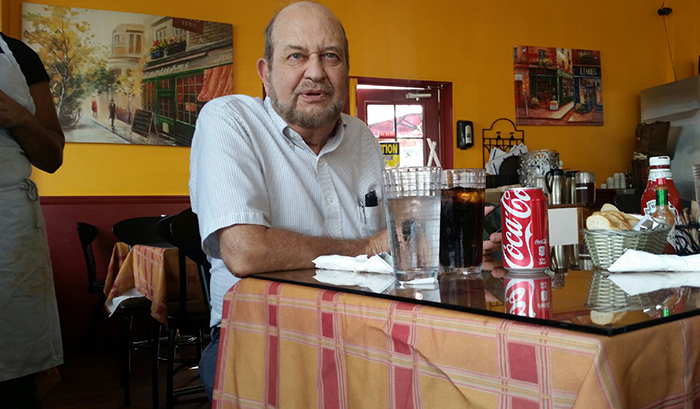Eight months ago, at 5 a.m. on Dec. 15, the 83-year-old superintendent of America’s second largest school district was awakened with the news that Los Angeles public schools were threatened with an attack by as 33 terrorists. They would hit schools at random. They would secrete bomb-laden backpacks in a variety of places, the threat said.
With many parents preparing to send or escort their kids to school for early-morning programs (some high school athletic teams and music departments start pre-school-hours practice at 6 a.m.), Ramon Cortines acted almost immediately. He ordered the huge district of 640,000 students closed for the day.
The question for the future, as schools get set to reopen in the next few weeks: In a similar situation, should the district and others again shut down?
It’s an active issue. When New York’s school system – once headed by Mr. Cortines – later received a similar threat, district officials increased police presence but did not close any schools.
Both threats were hoaxes.
They were, however, not quite identical. In New York, the threat claimed to involve 138 terrorists. Authorities there, before even consulting the school district chief, concluded it was highly unlikely 138 persons could work together in an organized manner without federal authorities being aware of something. There was no raising of the area’s threat level in either city prior to the threats.
The New York threat also called the New York City Schools by a different name.
It’s a lot easier to organize 33 persons quietly than four times that number, which almost automatically made the Los Angeles threat seem more credible.
He Could Not Tarry
Mr. Cortines, who had to act far more quickly than New York officials, shut his system down, ordering texts and phone calls to all parents and teachers. Some were annoyed because they didn’t get the messages in time and showed up needlessly at schools.
It’s still not clear why Mr. Cortines wasn’t called earlier, when district officials had notified police and the FBI shortly after getting the threat at about 10 p.m. the night before. He said he should have been given more notice. Meanwhile, New York officials, led by Mayor Bill de Blasio, quickly concluded their threat was “so generic, so outlandish” it should not be taken seriously.
California mayors, unlike Mr. de Blasio, have no control over schools. Mayor Garcetti of Los Angeles had no voice in the closure decision. Later, he said he supported it.
Mr. Cortines and other Los Angeles officials said they get threats daily to individual schools around the district, but the last previous time all schools were closed came in January 1994, after the early-morning Northridge Earthquake.
“I’m not taking the chance of bringing children any place, into any part of a building, until I know it is safe,” Mr. Cortines said. The consensus has been that he did the right thing, especially since this came less than two weeks after the terrorist killings in nearby San Bernardino.
Said School Board president Steve Zimmer, “We did what we had to do to make sure we were absolutely certain that children and their teachers and all of our employees were safe.”
That’s the first instinct of all educators, whether their schools are public or private. But there were lessons to learn.
For one thing, the ultimate decision-maker in any district (Mr. Cortines in Los Angeles, Mr. de Blasio in New York) needs to be notified immediately to maximize time for decision-making. Had Cortines been awakened earlier, many people who were inconvenienced could have had an easier time.
For other districts in other cities, the lesson is that the more time their leaders get to analyze a potential threat, the faster they might discern whether it is genuine. For example, the Los Angeles message from the start bore hints it was phony: A lower case “a” in Allah, unheard-of for Muslims, lack of any Koranic quotes, usually employed in genuine terror threats, and a claim that the writer of the threat had nerve gas, also not credible.
Time is vital for those who must decide if a threat is real. The more school officials realize this, the more responsibly they will be able to act.
Mr. Elias may be contacted at tdelias@aol.com. Elias is author of the current book “The Burzynski Breakthrough: The Most Promising Cancer Treatment and the Government’s Campaign to Squelch It,” now available in an updated third edition. For more Elias columns, go to www.californiafocus.net

